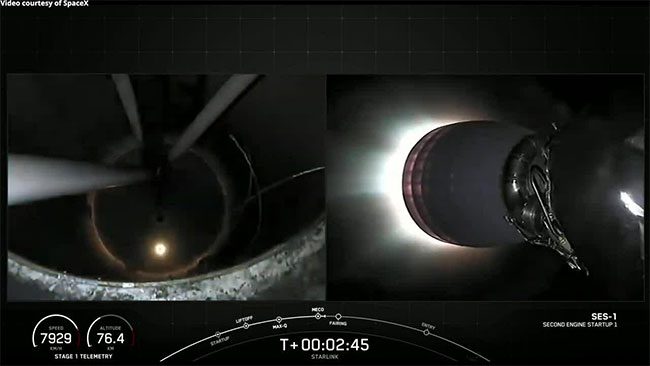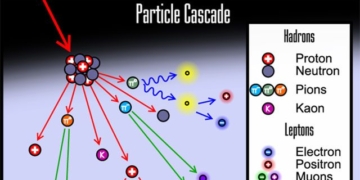A Falcon 9 rocket from SpaceX sets a new reusability record after its booster completes its 16th flight.
The Falcon 9 rocket carried 22 new-generation Starlink internet satellites from SpaceX, taking off from Cape Canaveral Space Force Station in Florida at 10:58 AM on July 10. This marks the 16th mission for the first stage of the rocket, according to SpaceX.
The booster was scheduled to return to Earth, landing in the Atlantic Ocean off the coast of Florida. It successfully touched down on SpaceX’s autonomous drone ship, Just Read the Instructions, approximately 8.5 minutes after liftoff. Meanwhile, the upper stage of the Falcon 9 continued to carry the 22 Starlink satellites into low Earth orbit. This satellite cluster is expected to be deployed about 62 minutes after launch.
The new Starlink satellites are of the V2 Mini type, which are larger and more powerful than previous versions. The Falcon 9 can hold about 50 of these satellites. However, they are still smaller than the final V2 satellites. That heavier spacecraft, weighing 1.1 tons, will launch on SpaceX’s Starship vehicle. The V2 Mini includes many key technologies, such as advanced phased-array antennas and the use of the E-band, allowing Starlink to achieve four times the capacity compared to earlier versions.

Falcon 9 rocket launches from Florida on July 10.
The first stage of the Falcon 9 last launched in December of the previous year. Among its 15 prior flights was Demo-2, SpaceX’s first crewed mission that transported two NASA astronauts to the International Space Station in 2020. Another Falcon 9 booster has flown 15 missions, and several boosters have flown 14 missions.
Starship is set to take space travel to new heights. It is the most powerful rocket ever built, designed for full reusability. Both stages of the rocket are capable of flying multiple times in a single day, according to SpaceX founder and CEO Elon Musk.




















































